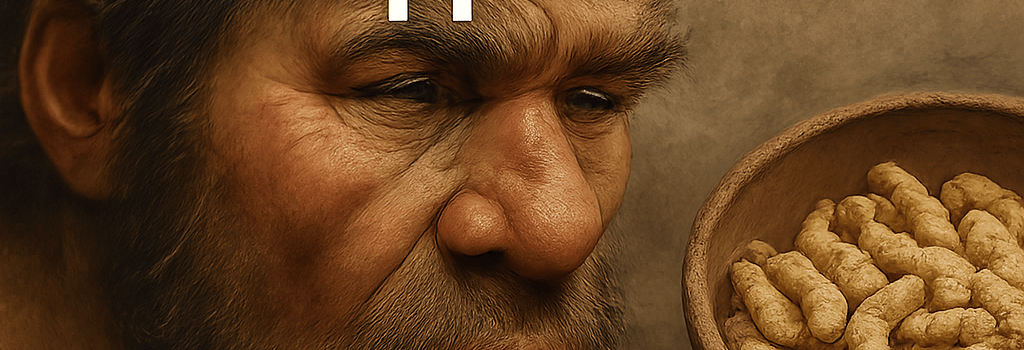Neanderthal Diets: Fermented Meat and Maggots Reappraised

Recent interdisciplinary research combining stable isotope analysis, forensic entomology, and palaeoproteomics has challenged long-held views of Neanderthals as strict hypercarnivores. New data suggest that semi-putrid foods and insect larvae—maggots—played a significant role in their subsistence strategy, inflating δ¹⁵N signatures without invoking exclusive meat consumption.
Reevaluating Neanderthal Trophic Levels via Stable Isotopes
Isotope ecologists measure ratios of nitrogen-15 to nitrogen-14 (δ¹⁵N) and carbon-13 to carbon-12 (δ¹³C) using elemental analysis–isotope ratio mass spectrometry (EA-IRMS) or high-resolution gas source mass spectrometry (GC-IRMS). Calibrated against international standards (e.g., IAEA-N1, USGS34), these instruments achieve a precision of ±0.2‰. Typical trophic enrichment is +3–5‰ per level, but Neanderthal bones often register δ¹⁵N values of +12 to +16‰, on par with extant carnivores like cave lions (Panthera spelaea).
Isotope Fractionation and Permil Variability
During amino acid deamination and transamination, fractionation favors the lighter ¹⁴N, enriching consumer tissues in ¹⁵N. Herbivores consume plants with δ¹⁵N ≈ 0–3‰; secondary consumers jump to 5–8‰; apex predators peak above 10‰. However, taphonomic processes—decay, cooking, fermentation—can skew these signatures by an additional 1–4‰.
Maggots as a Nutritional and Isotopic Contributor
Black soldier fly (Hermetia illucens) and blowfly larvae feeding on decaying muscle tissue have δ¹⁵N values ranging from +5.4‰ up to +43.2‰. These trophic enrichment factors (TEF) exceed those of most vertebrate prey. Controlled decomposition trials at the University of Tennessee’s Forensic Anthropology Center used replicate muscle specimens (n=30) and standardized maggot collectives (10–15 g each), revealing that larval δ¹⁵N increases by 20–30‰ relative to fresh tissue.
“Our latest forensic entomology data indicate that a single maggot cohort can elevate a consumer’s δ¹⁵N by over 5‰ after just two weeks of feeding,” says Dr. Elena Ruiz, Forensic Anthropologist at University College London.
Advanced Analytical Techniques
Recent studies published in Nature Communications (March 2025) employed accelerator mass spectrometry (AMS) coupled with nano-liquid chromatography–tandem mass spectrometry (nLC-MS/MS) to perform palaeoproteomic profiling on bone collagen. This approach identified 27 peptide biomarkers indicative of fermented or aged muscle tissue residues, correlating with elevated δ¹⁵N locales in the archaeological record.
Nutritional Biochemistry of Larval Consumption
- Macronutrient Profile: Maggots yield ~550–650 kcal/100 g dry mass, with lipid content up to 35 % (C16:0, C18:1) and protein over 45 % complete amino acid profile.
- Micronutrients: Rich in vitamin B12 (0.2 mg/100 g), heme iron (15 mg/100 g), zinc (10 mg/100 g), and essential fatty acids.
- Digestibility: Chitinous exoskeleton partially hydrolyzed by Neanderthal chewing and possible fermentation, improving bioavailability.
Implications for Modern Forensic and Nutritional Sciences
The same δ¹⁵N enrichment patterns are now used in post-mortem interval (PMI) estimation, integrating entomological succession data with isotopic shifts. In parallel, the entomophagy movement and insect-protein startups leverage black soldier fly larvae bioconversion for sustainable feed and food, drawing inspiration from Pleistocene subsistence.
Conclusions and Future Research Directions
Neanderthals likely practiced complex food processing—drying, fermenting, caching, and maggot harvesting—yielding a mixed omnivorous diet masked by inflated δ¹⁵N signals. Ongoing interdisciplinary work will integrate:
- High-throughput palaeoproteomics to identify specific decay-phase biomarkers.
- AI-driven isotopic modeling (e.g., Bayesian mixing models in FRUITS software) to quantify maggot vs. meat intake.
- Comparative studies of Indigenous fermentation practices and controlled decay experiments.
By combining cutting-edge mass spectrometry, forensic entomology, and nutritional biochemistry, researchers are reshaping our view of hominin dietary ecology and broadening the toolkit for both archaeological and modern forensic applications.